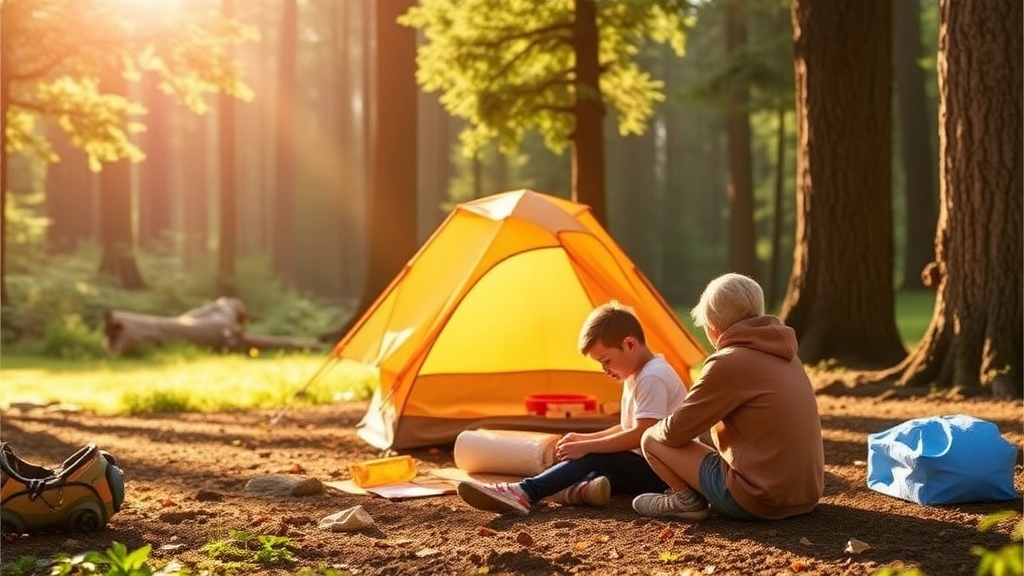Planning a Summer Camp
Planning a summer camp can be overwhelming, but having a solid Summer Camp Planning Template can make all the difference. From structuring daily activities to organising fun and educational lessons, a well-thought-out template ensures everything runs smoothly and efficiently.
Engagement and Excitement
Incorporating creative themes and supplemental materials keeps campers engaged and excited. Efficient staffing strategies and tools for collecting feedback help maintain consistency and flexibility, making your camp experience enjoyable for everyone involved.
Essential Components of a Summer Camp Planning Template
Alright, let’s cut to the chase. Planning a summer camp can be a bit of a beast, right? You’ve got to juggle a million things at once and keep everyone happy. So, what’s the secret sauce to nailing this? It all starts with a rock-solid summer camp planning template. This template is your blueprint, your roadmap, your lifeline. Without it, you’re flying blind.
Why Do You Need a Summer Camp Planning Template?
Ever felt like you’re drowning in details? Yeah, me too. A planning template is your life raft. It helps you:
- Stay organised: Keep track of all the moving parts.
- Save time: No need to reinvent the wheel every year.
- Ensure consistency: Every camper gets the same awesome experience.
What Should Be in Your Summer Camp Planning Template?
Let’s break it down into bite-sized chunks. Here’s what you absolutely need:
-
Camp Overview
- Name of the Camp: Obvious, but essential.
- Dates and Duration: When’s it happening? How long?
- Location: Where’s the magic going down?
-
Camper Information
- Registration Details: Who’s coming? Contact info, medical details, special needs.
- Age Groups: Different strokes for different folks. Tailor activities accordingly.
-
Daily Schedule
- Morning Activities: Start the day with a bang.
- Afternoon Activities: Keep the momentum going.
- Evening Activities: Wind down, but keep it fun.
-
Activity Plans
- Description: What’s the activity? Why’s it awesome?
- Materials Needed: Don’t get caught empty-handed.
- Instructions: Step-by-step guide to make it foolproof.
-
Staffing Plan
- Roles and Responsibilities: Who’s doing what? Make it crystal clear.
- Contact Information: Quick access in case of emergencies.
-
Budget
- Income: Camper fees, sponsorships, donations.
- Expenses: Accommodation, food, materials, staff wages.
-
Emergency Plan
- First Aid: Who’s trained? Where’s the kit?
- Emergency Contacts: Local hospitals, parents, authorities.
Real Talk: What Happens if You Skip This?
Imagine a camper gets hurt, and you can’t find their emergency contact info. Or you run out of materials halfway through an activity. Nightmare, right? A solid template prevents these disasters.
Pro Tips for a Killer Template
- Use Software: Google Sheets, Excel, or specialised camp management software.
- Update Regularly: Don’t let it gather dust. Keep it fresh.
- Get Feedback: Ask your team what works and what doesn’t.
For more detailed guidance, you might want to check out our Summer Camp Application Template Guide.
Creating a Structured Camp Schedule for Daily Activities
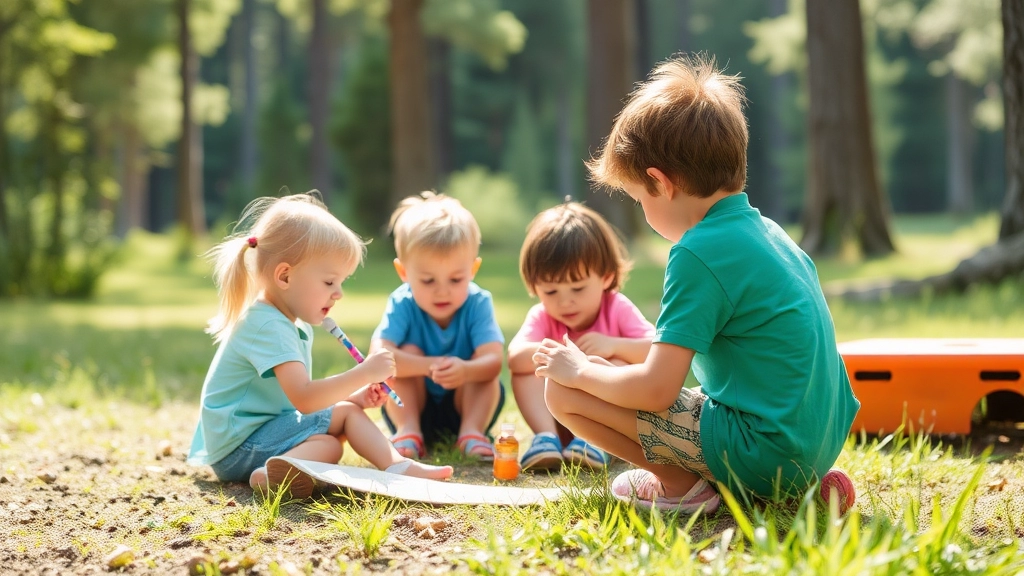
Ever felt overwhelmed trying to create the perfect camp schedule? Trust me, you’re not alone.
Why is a structured schedule crucial?
Because chaos is the enemy of fun.
A well-organised schedule keeps everyone on track and maximises the fun without the fuss.
Start with the Basics
- Morning Kick-Off: Begin with a high-energy activity to wake everyone up.
- Balanced Meals: Schedule breakfast, lunch, and snacks at consistent times.
- Activity Blocks: Break the day into segments for different activities.
Example Schedule
| Time | Activity |
|---|---|
| 8:00 – 9:00 | Breakfast |
| 9:00 – 10:00 | Morning Warm-Up Games |
| 10:00 – 12:00 | Educational Workshops |
| 12:00 – 1:00 | Lunch |
| 1:00 – 3:00 | Outdoor Adventures |
| 3:00 – 4:00 | Snack Break |
| 4:00 – 5:00 | Creative Arts & Crafts |
| 5:00 – 6:00 | Free Play/Wrap-Up |
Keep It Flexible
- Buffer Time: Include short breaks between activities.
- Plan B: Have backup indoor activities for rainy days.
- Cam
Key Steps for Organising Fun and Educational Camp Lessons
Alright, let’s dive into the nitty-gritty of organising fun and educational camp lessons. How do you make camp lessons engaging yet informative? You want the kids to learn, but you also want them to have a blast. Here’s how to strike that perfect balance.
Start with Clear Objectives
First things first, what are your goals? What do you want the campers to take away from each lesson? Whether it’s learning a new skill, fostering teamwork, or simply having fun, setting clear objectives will guide your planning.
Break Down the Day
Don’t overwhelm yourself by planning everything in one go. Break down the day into manageable chunks:
- Morning Sessions: Typically, kids are more attentive in the morning. Use this time for educational activities.
- Afternoon Sessions: Post-lunch, focus on fun and interactive activities to keep the energy levels up.
- Evening Wind-Down: Use this time for reflection, storytelling, or light activities.
Mix It Up with Different Formats
Variety is the spice of life, right? The same goes for camp lessons. Here are some formats to consider:
- Workshops: Hands-on activities where campers can get involved.
- Lectures: Keep these short and interactive.
- Games: Turn learning into a fun competition.
- Group Projects: Promote teamwork and collaboration.
Use the Right Tools and Materials
You can’t build a house without tools, and the same goes for camp lessons. Here’s a quick list of essentials:
- Visual Aids: Posters, charts, and slides.
- Interactive Tools: Tablets, whiteboards, and projectors.
- Supplies: Art materials, sports equipment, and educational kits.
Storytelling: The Secret Sauce
Kids love stories. Weave in anecdotes and real-life examples to make lessons relatable. For instance, if you’re teaching about nature, share a story about a famous explorer or a personal adventure in the wild.
Get Feedback and Adjust
No plan is perfect from the get-go. Ask for feedback from the campers and your staff. What did they enjoy? What could be better? Use this feedback to tweak your lessons.
Keep It Real and Fun
Remember, the keyword here is fun. No one wants to sit through a boring lecture, especially not kids at a summer camp. Keep the energy high, the activities varied, and the lessons engaging.
Example: A Day at Nature Camp
Let’s say you’re organising a nature camp. Here’s a sample schedule:
- Morning: Nature walk and plant identification workshop.
- Late Morning: Short lecture on ecosystems with interactive Q&A.
- Lunch Break: Picnic with nature-themed games.
- Afternoon: Group project to create a mini-ecosystem in a jar.
- Evening: Campfire storytelling session about famous explorers.
By breaking down the day and mixing up formats, you keep things fresh and exciting. For more ideas on how to make your camp sessions engaging, check out our Creative Arts and Crafts Ideas and the Top Outdoor Games for Summer Camp Fun.
Efficient Staffing Strategies for Successful Camp Operations
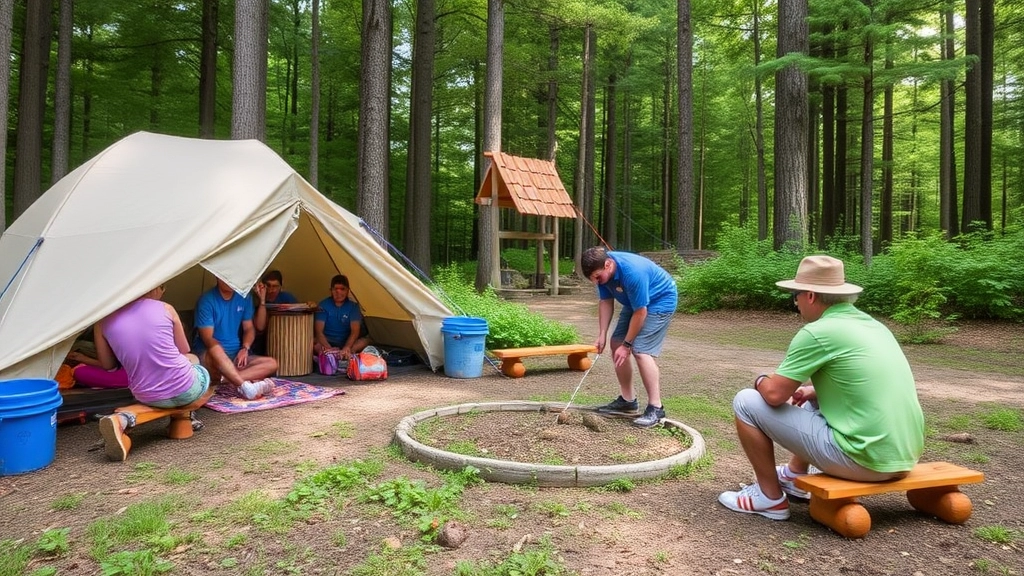
Struggling with Staff Shortages?
Hey, we’ve all been there.
Finding the right team for your summer camp can feel like hunting for a needle in a haystack.
But don’t stress; I’ve got your back.
Let’s break it down.
Start Early and Be Picky
- Recruit Early: Start your recruitment process months in advance. The earlier, the better.
- Be Selective: Don’t just hire anyone. Look for people who are passionate, reliable, and have the right skills.
Train Like a Pro
- Comprehensive Training: Provide thorough training sessions. Cover everything from first aid to conflict resolution.
- Role-Playing: Use role-playing scenarios to prep your team for real-life situations. It’s fun and super effective.
Keep Communication Open
- Daily Briefings: Hold short, daily briefings. Keeps everyone on the same page.
- Feedback Loops: Create a space for staff to give and receive feedback. It’s a two-way street, mate.
Foster Team Spirit
- Team-Building Activities: Plan regular team-building activities. It’s not just for the campers; your staff needs to bond too.
- Celebrate Wins: Recognise and celebrate achievements, big or small. Keeps morale high.
Delegate Wisely
- Know Your Team’s Strengths: Assign tasks based on each staff member’s strengths. It’s all about playing to your team’s strengths.
- Empower Leaders: Identify natural leaders and give them more responsibility. Trust me, it pays off.
Real Stories, Real Success
I once had a camp where we struggled with staff morale.
We introduced daily briefings and team-building exercises.
The change was night and day.
Our staff felt more connected and engaged.
The campers noticed too.
Stay Flexible
- Adaptability: Be ready to adapt. Things will go wrong, and that’s okay. Flexibility is key.
- Backup Plans: Always have a backup plan. For everything. Seriously.
Incorporating Creative Themes to Enhance Camper Engagement
So, you’re wondering how to keep campers buzzing with excitement all summer long? Well, let me tell you, incorporating creative themes is the secret sauce. If you’re feeling stuck or unsure where to start, you’re not alone. We’ve all been there. But don’t worry, I’ve got you covered. Let’s dive into why themes are a game-changer and how you can make them work for your camp.
Why Themes Matter
First off, why bother with themes? Simple. They boost engagement. Kids love variety, and themes provide a fresh twist to the daily grind. Plus, they make planning a breeze. Here’s how:
- Creates Anticipation: Kids look forward to what’s next.
- Adds Structure: Themes give your activities a cohesive feel.
- Encourages Creativity: Both for you and the campers.
Picking the Right Theme
Choosing the right theme can make or break your camp experience. Here are some pointers to get you started:
- Know Your Audience: What are the kids into? Superheroes, space, underwater adventures?
- Seasonal Relevance: Think summer vibes â beach, jungle, or carnival.
- Educational Value: Can you sneak in some learning? Maybe a science week or a history quest?
Examples of Winning Themes
Let’s get into specifics. Here are some tried-and-true themes that have worked wonders:
- Adventure Week: Think treasure hunts, map-reading, and obstacle courses.
- Science Week: Simple experiments, nature walks, and star-gazing nights.
- Superhero Week: Costume days, superhero training, and comic book creation.
Bringing Themes to Life
Once you’ve picked a theme, it’s time to bring it to life. Here’s a step-by-step guide:
- Decorations: Transform your camp space. Think banners, posters, and props.
- Activities: Tailor your games, crafts, and lessons to fit the theme.
- Costumes: Encourage kids (and staff!) to dress up.
- Storytelling: Weave a narrative throughout the week. Maybe you’re all pirates looking for treasure or astronauts exploring a new planet.
Real-Life Example
Let me share a quick story. Last summer, we ran a “Mystery Week.” Each day, the kids got clues that led to a grand reveal on the final day. The excitement was palpable. Kids were engaged, staff was motivated, and parents were thrilled. It was a win-win-win.
Tips to Keep It Fresh
Even the best themes can get stale if overdone. Here’s how to keep things fresh:
- Rotate Themes: Don’t repeat the same theme too often.
- Mini-Themes: Have smaller, daily themes within a larger weekly theme.
- Camper Input: Let the kids vote on themes. They’ll feel more invested.
For more ideas on how to keep your camp lively and engaging, check out our creative bulletin board themes and our fun cabin name ideas to add an extra layer of excitement to your camp.
Using Supplemental Materials to Support Camp Activities
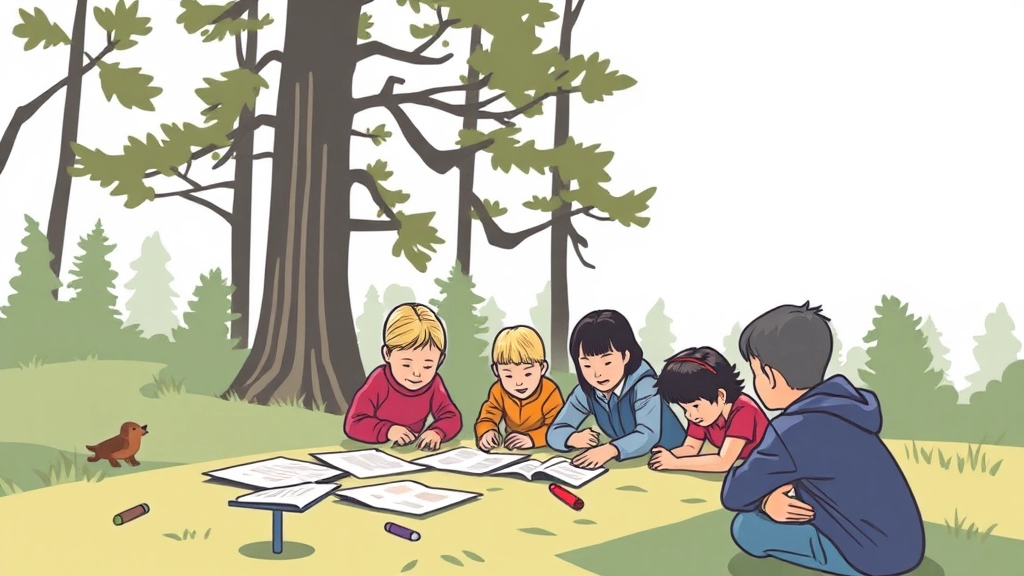
Ever wondered why some summer camps are absolute hits while others just fizzle out? It’s often down to the details, and one of those crucial details is using supplemental materials to support camp activities.
Why Supplemental Materials Matter
Let’s get real: kids get bored easily.
Having a variety of materials keeps things fresh and exciting.
Plus, it makes your job easier because you’ve got more tools in your toolkit.
Types of Supplemental Materials
1. Craft Supplies:
- Coloured paper
- Glue sticks
- Markers and crayons
2. Educational Tools:
- Books
- Flashcards
- Science kits
3. Outdoor Gear:
- Sports equipment
- Nature guides
- Binoculars
4. Tech Gadgets:
- Tablets for educational apps
- Cameras for photography lessons
Real-Life Example
Last summer, we introduced a “Nature Detective” theme.
We gave each camper a magnifying glass and a nature journal.
Guess what? They loved it.
They were more engaged, and the activities felt like a real adventure.
Quick Tips for Choosing Materials
- Age-Appropriate: Make sure the materials fit the age group you’re working with.
- Durable: Kids can be rough, so choose sturdy options.
- Educational: Aim for items that teach something new.
- Fun: If it’s not fun, it’s not worth it.
Where to Find Them
- Local Stores: Sometimes the best stuff is right around the corner.
- Online Retailers: Amazon, eBay, and other sites offer a wide range.
- Second-Hand Shops: Great for finding unique and affordable items.
Pro Tip
Always have a backup plan.
Stuff happens.
Materials get lost or damaged.
Having extras can save the day.
Tips for Maintaining Consistency and Flexibility in Scheduling
Ever tried to keep a summer camp schedule consistent and flexible at the same time? It can feel like juggling flaming torches while riding a unicycle. But trust me, it’s doable, and I’m here to show you how.
Why Consistency and Flexibility Matter
First off, why are we even talking about this? Well, consistency gives campers a sense of security. They know what to expect, and that helps them feel comfortable. On the flip side, flexibility is your best mate when things don’t go as plannedâbecause let’s face it, they rarely do.
Start with a Solid Framework
You need a strong foundation before you can start tweaking things. Here’s how you can build that:
- Set Core Activities: Think of these as your non-negotiables. Meals, rest times, and major events should be set in stone.
- Time Blocks: Use time blocks for different types of activities. For example, 9-11 AM might be for outdoor games, while 2-4 PM could be for arts and crafts.
Inject Flexibility into Your Schedule
Now, let’s add some wiggle room:
- Buffer Times: Include short buffer periods between activities. This gives you a cushion if something runs over.
- Plan B Activities: Always have backup activities that can be slotted in if something falls through. Think indoor games for rainy days.
- Camper Choice: Allow campers to choose between a couple of activities during certain times. This keeps them engaged and gives you flexibility.
Real-Life Example
Imagine it’s a typical Tuesday at camp. You’ve got a nature hike planned, but the skies open up. No worriesâyou’ve got a Plan B. Maybe it’s an indoor scavenger hunt or a quick trip to the local museum. The kids are still having a blast, and your schedule hasn’t gone off the rails.
Tools to Help You Out
You don’t have to do this all manually. Here are some tools that can make your life easier:
- Digital Calendars: Google Calendar or similar tools can help you keep track of everything and make quick adjustments.
- Camp Management Software: There are specialised apps out there designed for camp scheduling. These can be a lifesaver.
- Feedback Forms: Use simple forms to get feedback from campers and staff. This will help you tweak the schedule as you go.
For more tips on how to keep your summer camp running smoothly, check out our guide on top summer camp registration software for 2024 and our article on essential summer camp medical forms.
Tools for Collecting and Using Feedback During Camp
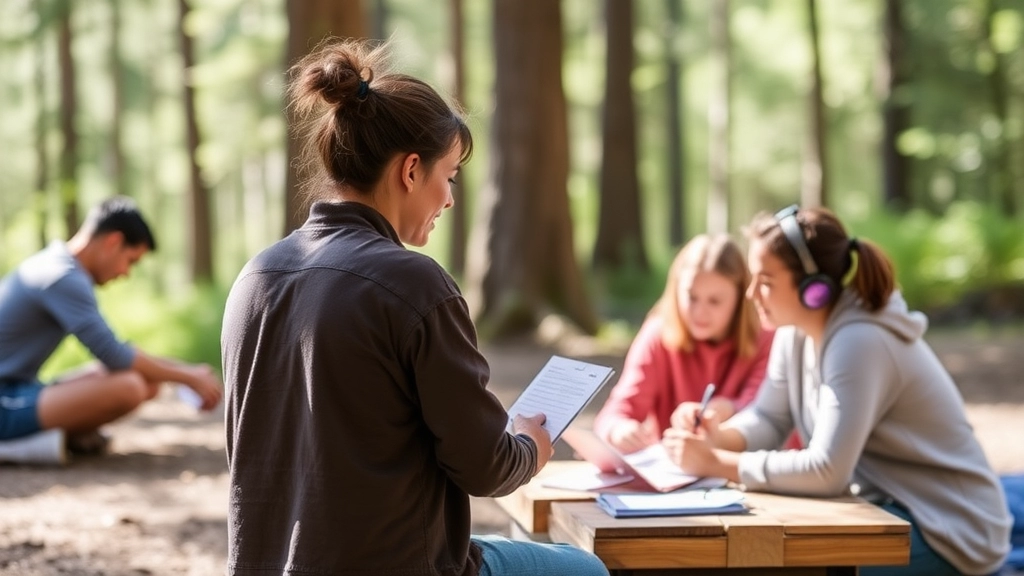
Ever wondered how to make sure your summer camp hits the mark? How do you know if the kids are actually having fun or learning anything?
Feedback, my friend.
Collecting and using feedback during camp is a game-changer. It’s like having a secret weapon to make things better on the fly.
Why Feedback is Crucial
Feedback isn’t just a formality. It’s your roadmap to a successful camp.
- Real-time adjustments: Get insights on what’s working and what’s not.
- Camper satisfaction: Ensure the kids are having a blast.
- Staff performance: Identify areas where your team can improve.
- Future planning: Make next year’s camp even better.
Tools to Gather Feedback
Here are some practical tools to collect feedback without making it a chore:
- Surveys: Quick and easy. Use tools like Google Forms or SurveyMonkey.
- Daily check-ins: Short surveys at the end of each day.
- End-of-week reviews: More detailed, covering the whole week.
- Suggestion Boxes: Old school but effective.
- Anonymous: Kids are more likely to be honest.
- Accessible: Place them in common areas.
- One-on-One Chats: Personal touch.
- Casual conversations: During meals or downtime.
- Focused questions: What did you enjoy today? What could be better?
- Observation: Sometimes actions speak louder than words.
- Staff notes: Have your team jot down observations.
- Behaviour tracking: Notice patterns in campers’ engagement.
Using the Feedback
Collecting feedback is only half the battle. You’ve got to use it. Here’s how:
- Daily Briefings: Share feedback with your staff every morning.
- Action Plans: Make quick changes based on what you’re hearing.
- Communicate Back: Let campers know you’re listening. “We heard you and here’s what we’re doing about it.”
Real-Life Example
Last summer, we noticed through daily surveys that the arts and crafts sessions were a bit of a drag. Kids wanted more interactive activities.
So, we swapped out a couple of sessions for a scavenger hunt and a water balloon fight.
Guess what? Camper satisfaction shot up by 30%.
Keep It Fresh
Feedback isn’t a one-and-done deal.
- Continuous Improvement: Keep tweaking based on what you learn.
- End-of-Camp Review: Gather comprehensive feedback to plan for next year.
Strategies for Preparing and Sharing Post-Camp Memories
Ever wondered how to keep the camp spirit alive even after the tents are packed up and the campfire’s embers are cold? That’s where preparing and sharing post-camp memories come into play. Trust me, it’s not just about nostalgia; it’s about creating lasting bonds and a sense of belonging. So, let’s dive into some killer strategies to make those memories unforgettable and shareable.
Capture the Moments in Real-Time
First things first, you’ve got to capture those golden moments. Here’s how:
- Photos and Videos: Always have a camera handy. Whether it’s a phone or a DSLR, make sure you snap photos and record videos of key activities.
- Daily Journals: Encourage campers to jot down their experiences in a camp journal. This not only helps them reflect but also gives you a treasure trove of content.
- Social Media Updates: Use platforms like Instagram or Facebook to post daily highlights. This keeps parents in the loop and builds excitement.
Create a Camp Memory Book
Now, let’s get those memories into something tangible. A camp memory book is a fantastic way to do this.
- Collect Content: Gather photos, quotes, and stories from both campers and staff.
- Design: Use online tools like Canva to design a visually appealing book. Make it colourful and full of life.
- Print: You can either print these books professionally or use a high-quality home printer. Hand them out during a post-camp reunion or mail them to the campers.
Host a Post-Camp Reunion
Nothing beats a face-to-face catch-up. Organise a post-camp reunion to relive the fun.
- Venue: Choose a relaxed venue like a local park or community hall.
- Activities: Plan some light activities like a slideshow of camp photos, storytelling sessions, or even a mini campfire.
- Refreshments: Keep it simple with snacks and drinks. The focus should be on the memories, not the menu.
Share Digital Memories
In today’s digital age, going online is a no-brainer.
- Private Facebook Group: Create a private group where campers and parents can share their own photos and stories. This keeps everyone connected.
- Email Newsletters: Send out a post-camp newsletter packed with highlights, photos, and upcoming events.
- Online Galleries: Use platforms like Google Photos or Flickr to create a shared album. This makes it easy for everyone to download and share their favourite moments.
Make Use of Testimonials and Reviews
Word of mouth is powerful. Encourage campers and parents to leave testimonials and reviews.
- Surveys: Send out a quick survey to gather feedback. Make it easy with multiple-choice questions and a few open-ended ones.
- Testimonials: Ask for short testimonials that you can feature on your website or social media. A happy camper’s words can do wonders for your camp’s reputation.
Personal Touches
Sometimes, it’s the little things that make the biggest impact.
- Thank You Notes: Send personalised thank-you notes to each camper. Mention a specific moment or achievement to make it feel special.
- Certificates: Hand out certificates for participation or special achievements. It’s a small gesture that goes a long way.
So, there you have it. By capturing, creating, and sharing these memories, you’re not just ending a camp; you’re building a community. And trust me, when campers feel like they belong, they’ll be counting down the days until next summer. Keep it real, keep it fresh, and keep those memories alive.
For more ideas on how to keep the camp spirit alive, check out our guide to fun summer camp books and our list of exciting summer camp activities.
Integrating New Activities to Keep Camps Fresh and Exciting
Ever worried that your summer camp might get a bit stale?
Yeah, me too.
Kids these days have shorter attention spans and higher expectations.
Keeping things fresh is a must.
So, how do we keep camps exciting and engaging?
Start with What Kids Love
Ask yourself: What are kids into nowadays?
- Trendy sports: Think pickleball or ultimate frisbee.
- Creative arts: How about digital photography or street art?
- STEM activities: Coding, robotics, or simple science experiments.
Rotate Activities Regularly
Don’t let activities get old.
Mix it up.
- Weekly themes: One week could be all about space, the next about underwater adventures.
- Daily surprises: Introduce a “mystery activity” each day to keep them guessing.
Get Feedback from the Campers
Who knows better than the kids themselves?
Ask them:
- What did you enjoy the most?
- What would you like to try next?
Incorporate New Trends
Stay updated on what’s hot.
- Escape rooms: Create a mini escape room challenge.
- Virtual reality: If you can swing it, VR can be a game-changer.
Use the Outdoors
Nature never gets old.
- Nature scavenger hunts: Kids love a good hunt.
- Outdoor survival skills: Teach them how to build a shelter or start a campfire.
Make It Interactive
Kids love hands-on activities.
- DIY projects: Let them create something they can take home.
- Group challenges: Teamwork makes the dream work.
Keep It Real and Relatable
Share stories.
Remember that time we introduced a new game and it flopped?
Yeah, learn from that.
Plan for All Ages
Tailor activities to different age groups.
- Younger kids: Simple crafts, easy games.
- Older kids: More complex challenges, leadership roles.
Evaluate and Adapt
After each camp, review what worked and what didn’t.
- Surveys: Quick and easy way to get feedback.
- Staff meetings: Debrief and brainstorm new ideas.
Stay Flexible
Be ready to pivot.
If something’s not working, change it up.
For more tips on keeping your camp exciting, check out our Creative Summer Camp Theme Weeks and learn how to incorporate engaging themes into your schedule. Also, discover the best Top Summer Camps in Columbia, South Carolina for some inspiration on how to keep your camp fresh and exciting.
FAQs on Summer Camp Planning Template
What is a summer camp planning template?
A summer camp planning template is a structured guide that helps in organizing daily activities, staffing, and other essential elements to ensure a smooth and enjoyable camp experience.
Why is a structured camp schedule important?
A structured schedule is crucial because it keeps everyone on track and maximizes fun without the chaos. It ensures that activities are well-organized and that meals and breaks are consistent.
What should be included in a daily camp schedule?
A daily camp schedule should include:
- Morning Kick-Off: High-energy activities to start the day.
- Balanced Meals: Scheduled times for breakfast, lunch, and snacks.
- Activity Blocks: Segments for different activities like educational workshops, outdoor adventures, and creative arts & crafts.
How can I make my camp schedule flexible?
To keep your camp schedule flexible, include buffer times between activities, have backup indoor activities for rainy days, and be prepared to adapt as needed.
What are some efficient staffing strategies for camp operations?
Efficient staffing strategies include:
- Recruit Early: Start recruiting months in advance.
- Be Selective: Hire passionate, reliable, and skilled individuals.
- Provide Comprehensive Training: Cover all necessary skills, including first aid and conflict resolution.
- Maintain Open Communication: Hold daily briefings and create feedback loops.
- Foster Team Spirit: Plan team-building activities and celebrate achievements.
Why are supplemental materials important for camp activities?
Supplemental materials keep activities fresh and exciting, help maintain camper engagement, and provide additional tools to make the job easier for camp staff.
What types of supplemental materials should I consider?
Consider the following types of supplemental materials:
- Craft Supplies: Coloured paper, glue sticks, markers, and crayons.
- Educational Tools: Books, flashcards, and science kits.
- Outdoor Gear: Sports equipment, nature guides, and binoculars.
- Tech Gadgets: Tablets for educational apps and cameras for photography lessons.
How can feedback improve my summer camp?
Feedback helps in making real-time adjustments, ensuring camper satisfaction, improving staff performance, and planning for future camps. It provides a roadmap to a successful camp experience.
What are some tools to collect feedback during camp?
Effective tools for collecting feedback include:
- Surveys: Use tools like Google Forms or SurveyMonkey for daily check-ins and end-of-week reviews.
- Suggestion Boxes: Place them in common areas for anonymous feedback.
- One-on-One Chats: Casual conversations during meals or downtime.
- Observation: Staff notes and behavior tracking to notice patterns in camper engagement.
How should I use the feedback collected during camp?
Use the feedback by sharing it with your staff during daily briefings, making quick changes based on the feedback, and communicating back to the campers about the adjustments made.
What should I do if things don’t go as planned?
Stay adaptable and always have a backup plan. Flexibility is key to managing unexpected situations effectively.
References
-
Creating a Structured Camp Schedule for Daily Activities
-
Efficient Staffing Strategies for Successful Camp Operations
-
Using Supplemental Materials to Support Camp Activities
-
Tools for Collecting and Using Feedback During Camp

